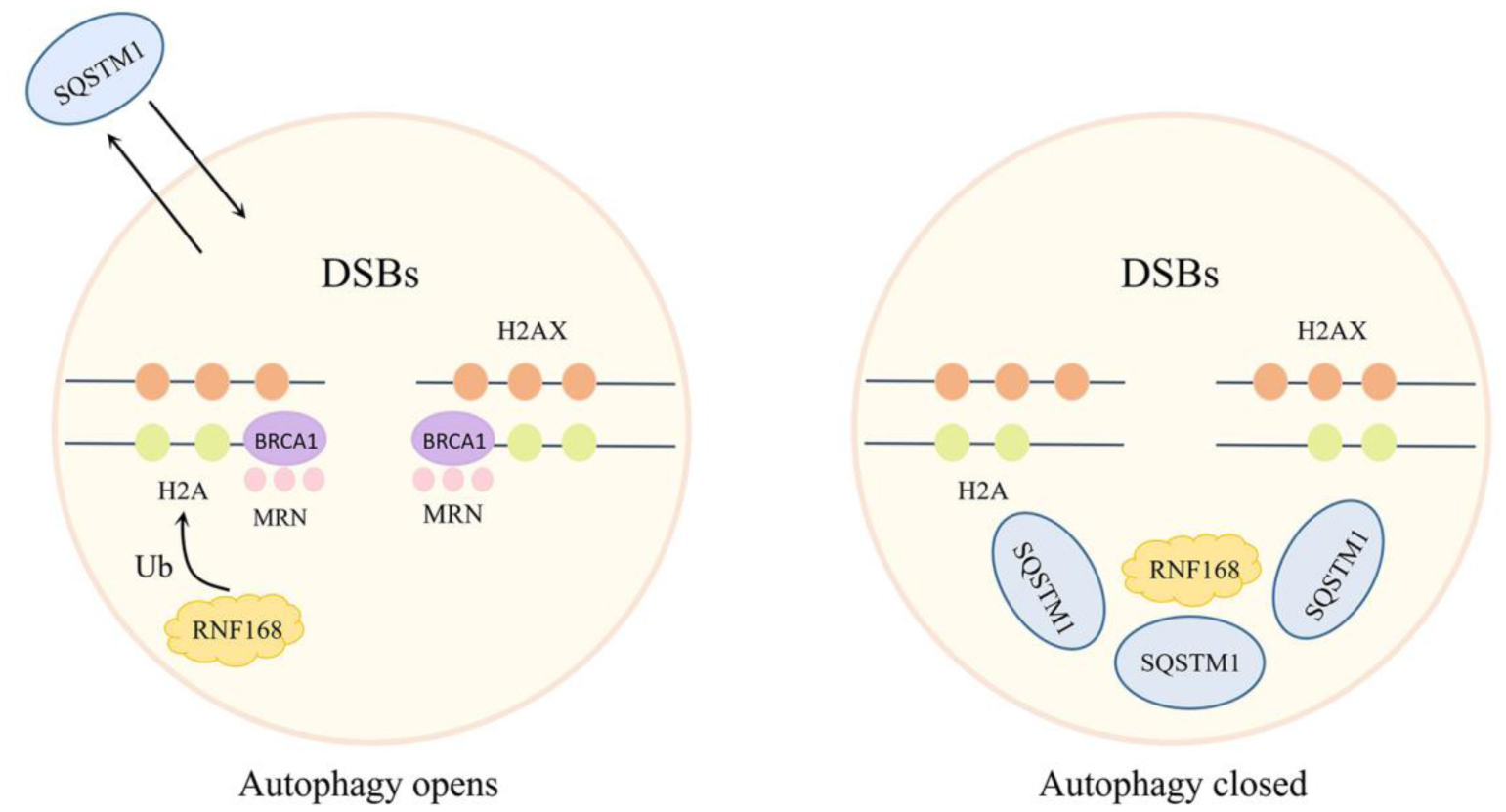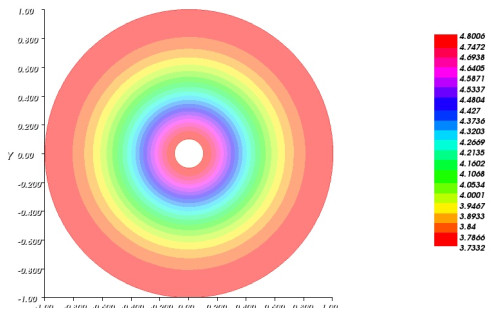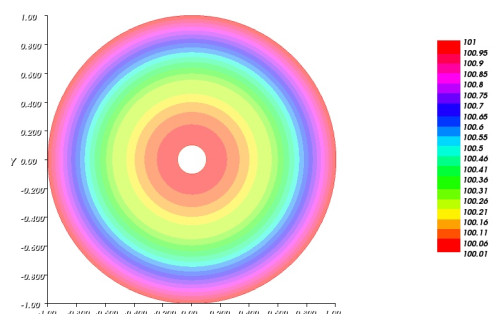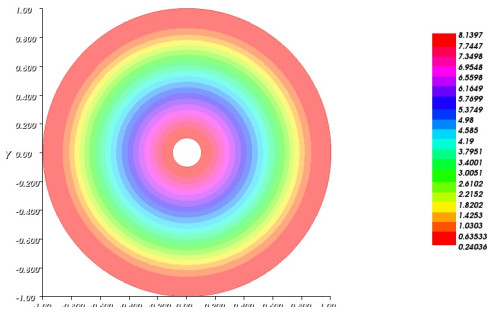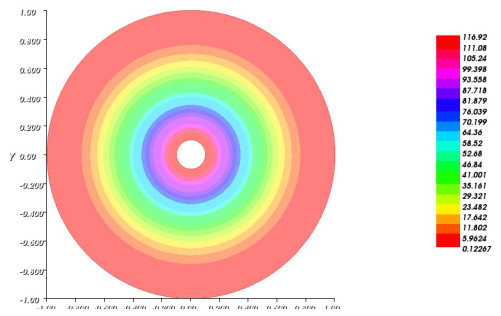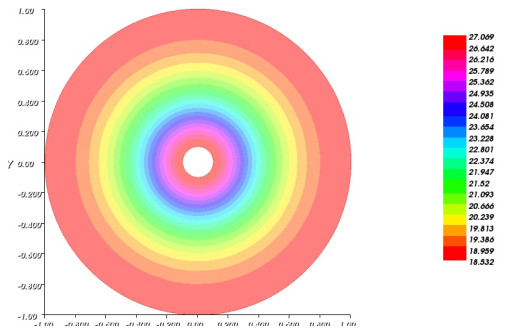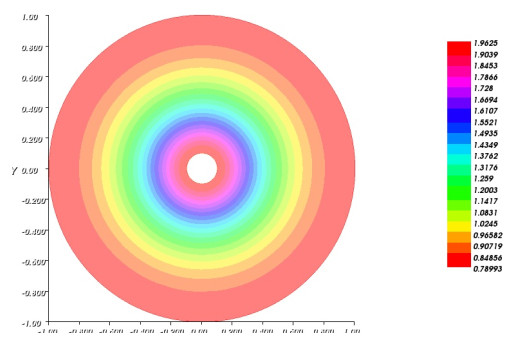1.
Introduction
Autophagy is an essential cellular catabolic process. The double-layer membrane structure of autophagosomes wraps either misfolded proteins or damaged organelles and fuses with lysosomes. Autolysosomes are subsequently hydrolyzed by lysosomal acid hydrolase to produce biological molecules such as amino acids, which are ultimately reutilized by cells to achieve intracellular substance circulation [1].
According to the different ways by which cell contents access lysosomes, autophagy is typically classified as one of three types: Macroautophagy, chaperone-mediated autophagy (CMA), and microautophagy. Incredibly, in the end, all three autophagy pathways reach the lysosome. Nevertheless, the journey of target cargoes to the lysosome is different in these pathways. In CMA, Lysosomal-Associated Membrane Protein 2A (LAMP 2A) is a lysosomal membrane receptor that recognizes proteins attached to the chaperone protein HSC70 and allows the complex to enter the lysosomal membrane [2]. The fundamental mechanism of mammalian microautophagy is the formation of protrusions of the lysosomal membrane that wrap around cytoplasm, organelles, or substances to be degraded; this is known as the lysosomal wrapping mechanism [3]. As a consequence, neither microautophagy nor CMA require autophagosomes, but rather rely on the degradation function of lysosomes. Macroautophagy delivers the cytosolic cargoes by engulfing them in double-membrane vesicles called autophagosomes, which eventually fuse with lysosomes and form autolysosomes. Since macroautophagy is a common way for cells to clear damaged organelles and other related debris, the term “autophagy” generally refers to macroautophagy unless otherwise specified.
Recent studies have indicated that autophagy also plays an important role in tumor cells. On one hand, autophagy can promote the tolerance of tumor cells to aversive environments and maintain their survival. On the other hand, as a survival pathway and quality control mechanism, autophagy can prevent the occurrence and progression of tumors in the early stage and even cause the death of certain apoptosis-defective cancer cells [4].
Selective autophagy is one of the principal forms of autophagy, which targets specific damaged or excessive organelles for degradation; organelle-specific autophagy is a crucial mechanism for maintaining cellular homeostasis by removing damaged or redundant organelles affected by various stresses [5]. Consequently, the failure of organelle-specific autophagy can have far-reaching effects on diseases ranging from inflammatory diseases to tumor invasion, indicating that the quality control levels of multiple organelles are inextricably linked to cell fate and the development of various diseases.
In this review, we discuss the dual role of autophagy in cells, how autophagy repairs genomic damage, and the impact of selective autophagy on tumor quality control and metabolic reprogramming.
2.
Molecular mechanisms of autophagy
The process of autophagy is a complex, multi-step pathway involving multiple protein complexes, accessory proteins, and membranes; therefore, an in-depth analysis of the steps of autophagy is meaningful for regulating autophagy-based therapies [6]. Currently, we know that the autophagy pathway is primarily composed of five key stages, while some genes shared by endosome and lysosome pathways can extend the autophagy pathway to seven stages. What we generally discuss is the five steps: 1) the initial signal of autophagy; 2) formation of phagophore; 3) formation of autophagosome; 4) fusion of autophagosome and lysosome; and 5) degradation of target materials and recycling [7] (Figure 1).
The Unc-51 like autophagy activating kinase 1 (ULK1) complex induces the formation of the initial phagosome components in mammals [8]. The primary regulator of autophagy, mechanistic target of rapamycin complex 1 (MTORC1), is closely associated with the functional activity of this complex, and the activation of the ULK1 complex is ultimately determined by the nutritional status of cells [9]. MTORC1 exerts its activity by binding and phosphorylating ULK1 and Atg13 under normal metabolic conditions [10]. This inhibits the formation of autophagosomes by preventing the induction of a phagophore. MTORC1 is inactivated and dissociated from the complex when cells are in a state of nutrient deficiency due to weakened Mitogen Activated Protein Kinase (MAPK) and phosphoinositide3 kinase (PI3K)/Akt signaling pathways [11]. This results in the dephosphorylation of the ULK1 complex, which activates the autophagy pathway.
The amplification of autophagosome requires two ubiquitin-like (UBL) conjugation systems. ATG12 covalently bonds to ATG5 via ATG7 and ATG10 to produce a complex of ATG12-ATG5-ATG16L1 [12]. As a result, ATG12 is the first UBL system discovered in the autophagy process. The ATG12-ATG5 complex non-covalently dimerizes with ATG16L1 to generate a larger complex. The resulting ATG12-ATG5-ATG16L1 complex is conserved across domains and performs a crucial role in autophagosome formation [13]. The second UBL system recruits microtubule-associated protein 1 light chain 3 (MAP1LC3) via the ATG12-ATG5-ATG16L1 complex [14]. LC3, a member of the ATG8 family, was first converted to LC3 1 by a cysteine protease ATG4B. In subsequent steps, the E1 like-enzyme Atg7 and E2 like-enzyme Atg3 both contribute to the activation of LC3 1 [15]. Then, after a class of glycerophospholipids, phosphatidyl ethanolamine (PE) binding, LC3 1 was converted into a membrane-bound form LC3 II [16].
Finally, mature autophagosomes encapsulate the target cargo within a double-membrane phagosome [17]. The microtubule-mediated movement of autophagosomes to lysosomes is a crucial step in both the transportation of cargo and the formation of autolysosomes. The inner membrane and cargo of autophagosomes are subsequently degraded due to the presence of hydrolases in lysosomes. Through lysosomal permeases, degraded components such as amino acids and fatty acids are exported to the cytoplasm, where they can be recycled [4].
Autophagy is a complex process that requires the participation of upstream pathways for activation. When nutrition is adequate, mTORC1 is active and phosphorylates ULK1/2 and Atg13 to inhibit the initiation of autophagy. In malnutrition, mTORC1 is inactivated and its ability to regulate the pathway is weakened. MiT/TFE regulators enter the nucleus, so that the elements expressed by coordinated lysosomes are recognized by gene promoters located in autophagy and lysosomes, and the transcription levels of these genes are upregulated. Simultaneously, excessively low ATP levels trigger AMPK activation, which leads to ULK1/2 phosphorylation, thereby promoting kinase activity. Surprisingly, in turn, ULK1/2 phosphorylates Atg13 and FIP200 to aid initiating the autophagy pathway.
The fusion of autophagosomes and lysosomes enables hydrolases to degrade the cargo, which is then excreted via lysosomal permeases.
3.
Role of autophagy in cell survival and death
Through autophagy, cells survive under stressful conditions (such as hypoxia, pH or osmotic pressure changes, and a lack of nutrients such as amino acids) and avoid apoptosis. Experiments conducted by Qian Tan et al. proved this view. Under hypoxic conditions, the survival rate of wild-type and autophagy-deficient cells after exposure for 24 to 48 hours was significantly lower than that under aerobic conditions, and autophagy-deficient cells died significantly faster. To further demonstrate the role of autophagy in hypoxic cells, they evaluated the viability of wild-type and autophagy-deficient cells exposed to either aerobic or hypoxic conditions for 24 hours using autophagy (a late inhibitor of autophagy). The results demonstrated that under aerobic conditions, the survival rate of cells lacking autophagy-related genes was lower than that of wild-type cells, whereas under hypoxic conditions, the survival rate loss was relatively greater. This implies that autophagy is a cell defense mechanism [18]. Furthermore, the study indicated that the eIF2/ATF4 pathway controlled the transcription program of autophagy genes implicated in stress adaptation. In other words, the eIF2/ATF4 pathway may play a crucial role in supplementing autophagosome-related proteins, thereby allowing cells to sustain autophagy and endure prolonged stress [19].
When the environmental pressure is too acute or the duration is too long, cell autophagy will degrade the cell's proteins and organelles excessively, causing the cell to be unable to survive and initiating the cell suicide mechanism. Simultaneously, certain apoptosis-related proteins are highly activated, resulting in the decomposition of several essential autophagy proteins, which paralyzes the autophagy process, terminates the cell's self-protection function, and accelerates cell death.
4.
Autophagy inhibits tumor progression
Early investigations have demonstrated that the autophagy gene Beclin1 inhibits human breast cancer [20]. Beclin1 is a tumor suppressor gene with a function defect due to a single allele deletion, and 40% to 75% of human ovarian cancer, breast cancers, and prostate cancers have a single allele deletion[21]. However, recent studies have shown that the deletion of BECN1 in human malignancies cannot be distinguished from the deletion of the breast cancer 1 (BRCA1) gene, indicating that BECN1 is not a tumor suppressor in the majority of human cancers. Intriguingly, the probability of spontaneous malignant transformation of the BECN1 allele in knockout mice significantly increased. BECN1 has a significant tumor suppressor effect only in mouse models of cancer [22].
It has been reported that additional genes related to autophagy are also closely associated with tumorigenesis. For instance, Atg5 has somatic mutations in gastric cancers, colon cancers, and hepatocellular carcinoma patient samples, accompanied by decreased protein expression levels [23]. Atg4C knockout will promote the development of fibrosarcoma in a mouse model [24]. The conditional depletion of either Atg5 or Atg7 in the liver of mice will result in the sporadic development of benign liver carcinomas [25].
Current studies on pancreatic cancer genetically engineered mouse models (GEMMs) have demonstrated that inhibition of autophagy in pancreatic epithelium does not result in the proliferation of benign tumor cells or the initiation of carcinogenic mutations [26]. This suggests that the inhibition of autophagy following benign tumor growth may be the result of additional carcinogenic damage in tumor cells. Additionally, an increasing number of studies have confirmed that the accumulation of p62 protein induced by autophagy defects is involved in the initiation of multiple tumor-inducing signals in cells, and that the deletion of p62 can substantially inhibit the tumorigenesis caused by autophagy defects [27]. In autophagy-deficient cells, the accumulation of p62 induces an increase in reactive oxygen species (ROS), resulting in endoplasmic reticulum stress (ER stress) and DNA damage; concurrently, the accumulation of p62 can regulate the expression of the NF-B pathway and its downstream genes, thereby enhancing the pro-tumor inflammatory response [27].
Numerous authors have conducted in-depth research on p53 by perusing an abundance of literature. Similarly, the role of p53 in tumor suppression is extremely complex. As one of the tumor suppressor proteins, mutations or deletions of the p53 gene have been identified in the majority of malignant tumors. Inhibition of cytoplasmic p53 protein degradation can either prevent autophagy activation or inhibit its fundamental level [28]. Activation of p53, which is typically mutated in cancer cells, can therefore restore tumor suppressor function and inhibit tumor development [29]. Moreover, DNA-damaged cells exhibit an increase in p53 expression, which can activate AMPK to promote autophagy, thereby removing damaged organelles and preventing carcinogenesis [30]; additionally, p53 can enhance DRAM-induced autophagy by increasing the transcription of lysosomal membrane protein DRAM1 (damage-regulated autophagy modulator 1, DRAM1) [31]. In conclusion, the aforementioned studies have revealed that autophagy can cause significant interference in certain malignancies, and that impaired autophagy may contribute to the development of cancer.
5.
Autophagy drives tumor development
Autophagy can have a suppressive effect on tumors in normal conditions, but it can also induce abnormal autophagy leading to cell malignant transformation and tumor cell formation. Therefore, some tumor cells utilize autophagy to combat stressful environments and sustain their basic metabolic functions, thereby enhancing their survival ability.
Some researchers have discovered that RAS genes play a complex and multifaceted function in autophagy, which is determined by the cellular environment and the type of malignancy. Under metabolic stress conditions, the RAS gene is activated and autophagy is induced [32]. Autophagy induced by RAS helps cancer cells adapt to the microenvironment of stress by supplying energy and nutrient sources and extending cell survival [33]. Likewise, KRAS is a constituent of RAS. In the analysis of colorectal cancer patients, it was discovered that the mutation rate of the KRAS gene was extremely high, and that this mutation promoted autophagy via the ERK signaling pathway, thereby providing nutritional support for colorectal cancer cells [34]. Recent research has disclosed a tight relationship between gastric cancer and autophagy. The PI3K/AKT/MTOR signaling pathway can hasten the progression of gastric cancer. When the pathway is blocked, the cell's ability to migrate and invade is significantly diminished, and apoptosis increases [35]. Collectively, these findings indicate that RAS-mediated autophagy plays a significant role in tumor survival and growth.
In the treatment of cancer, it has also been demonstrated that autophagy promotes cancer growth and reproduction. Chemotherapeutic drug efficacy may be impacted by the activation of autophagy. Certain chemotherapeutic medications for toxic cells can induce autophagy, leading to drug resistance [36]. In particular, inhibiting autophagy can increase gastric cancer cell sensitivity to cisplatin [37]. Studies have shown that inhibiting the Atg protein can increase the sensitivity of tumor cells to chemotherapy and radiotherapy. Inhibition of autophagy by chloroquine in mouse lymphoma cells can enhance p53 or DNA-alkylating agent-mediated cell death and cell inhibition. Autophagy inhibitors 3-MA and Bafilomycin A1 can increase the sensitivity of glioma cells to radiotherapy [38].
In conclusion, the function of autophagy in cancer is contradictory. On one hand, as a survival mechanism for cells, autophagy can effectively prevent cell necrosis in response to pressure, reduce the immune cell infiltration necrosis causes, and inhibit tumor growth and metastasis. Unfortunately, autophagy can facilitate accelerated tumor growth during the development of cancer, eliminate metabolic detritus that impedes tumor growth, inhibit tumor cell anoikis, and enhance metastasis' ability to promote survival and growth.
6.
Autophagy keeps the genome stable
The mammalian genome is composed of nuclear DNA (nDNA) and numerous copies of mitochondrial DNA (mtDNA), both of which are susceptible to genotoxic injury. Genotoxic injury can damage nDNA and mtDNA, thereby triggering autophagy and DNA repair signals in cells when the dose of genotoxicity is repairable [39]. Autophagy is indispensable for DNA damage repair (DDR). Numerous studies have indicated that autophagy can repair sublethal DNA damage. The primary process includes the degradation of pro-apoptotic proteins, the halting of the cell cycle, and the suppression of DNA damage response molecule proteolysis [40]. Meanwhile, mtDNA-deficient cells are additionally resistant to oxidative stress-induced cell mortality. This illustrates the significance of mtDNA in stress-induced toxicity mediation [41]. To determine the effect of autophagy inhibition on nDNA repair, Tung Chao et al. subjected mtDNA and nDNA to a level of repairable ionizing radiation (IR). The results demonstrated that moderate levels of mtDNA damage increased mitochondrial permeability without causing caspase-dependent nDNA damage, however, this did result in the release of endonuclease G (ENDOG). Without autophagy, nuclear translocation of ENDOG cooperates with tet methylcytosine dioxygenase 2 (TET2) to maintain n DNA damage. Finally, they assessed the nuclear localization of ENDOG errors in the context of autophagy impairment. According to studies, the oncogene HBx induces the mPTP-dependent nuclear translocation of ENDOG. Notably, a significant increase in nuclear ENDOG was detected in HBx transgenic mice liver tumors. Therefore, aberrant mitochondrial permeability resulting from impaired autophagy contributes to the development of cancer [42].
The mechanism by which autophagy-related proteins regulate genomic homeostasis in the nucleus has additionally attracted some attention. In mammalian cells, autophagy regulates the concentration of the essential repair protein RBBP8/CtIP [43]. When autophagy is activated, a variety of autophagy-related proteins can alter the genome's homeostasis either directly or indirectly. For instance, autophagy, modulates the protein level of active RHOA (ras homolog family member A) in mammals by regulating SQSTM1/p62. When autophagy is interrupted, active RHOA accumulates around the intermediate, resulting in cytoplasmic division failure, multinuclearization, and aneuploidy [44].
Figure 2 primarily illustrates that an increase in SQSTM1 inhibits the E3 ligase activity of RNF168. After DNA damage, the polyubiquitination of histones generated by RNF168 becomes blocked, which results in a decrease in the recruitment of DNA defect response proteins.
DNA double-strand breaks (DSBs) are predominantly repaired through homologous recombination (HR) and non-homologous end joining (NHEJ). By modulating the amount of SQSTM1 autophagosome cargo protein in the nucleus, autophagy is directly implicated in DSBs repair. By binding directly to its MU1 domain, an increase in SQSTM1 inhibits RNF168 (E3 ligase activity of ring finger protein 168). This effect inhibits the polyubiquitination of histones caused by RNF168, which decreases the recruitment of reactive proteins following DNA damage. Therefore, when autophagy is inhibited, an increase in the level of SQSTM1 reduces DNA damage repair.
In mammalian cells, one of the initial factors recruited to DSBs is the MRN complex, composed of MRE11 (MRE11 homolog, double strand break repair nuclease), RAD50 (RAD50 double strand break repair protein), and NBN (nibrin). The MRN complex is crucial for the initiation of signaling pathways, including the rapid activation and localization of ATM (Ataxia-telangiectasia mutated proteins) and other upstream signaling molecules. It is worth mentioning that after HR recruits and activates the damage sensing protein (ATM), MRN, together with its cofactor RBBP8 (RB binding protein 8) and cofactor BRCA1 (associated with DNA repair), initiates the 5′-3′ end of the DNA terminal reduction, resulting in the formation of 3′-OH single-stranded DNA (ssDNA) tails at both ends of the cleavage.
Simultaneously, when DNA is damaged, the chromatin structure will modify its own framework. Specific chromatin modification markers, such as phosphorylated histone H2A variant H2AX and ubiquitin chains affixed to histone H2A, serve as a platform in chromatin surrounding double-strand breaks (DSBs) by recruiting additional DDR factors, promoting DSBs repair, and amplifying signaling pathways.
7.
Selective autophagy controls organelle quality
In the majority of cells, selective autophagy drives the quality control of damaged or redundant organelles. As the normal functioning of cellular functions is dependent on healthy organelles, selective autophagy is essential for monitoring cellular health. Autophagy receptors on organelle membranes either identify depleted or damaged organelles or are recruited directly from the cytosol.
Currently, research on mitophagy conducted by humans is adequate. Mitophagy refers to the selective degradation of damaged mitochondria by lysosomes via autophagy, which responds to a variety of stimuli, including hypoxia, reactive oxygen species, and inhibitors [45]. Mitophagy can be initiated through both PINK1 (PTEN induced putative kinase 1)-PRKN (parkin RBR E3 ubiquitin protein ligase)-dependent and -independent pathways [46]. VDAC, RHOT1, and MFN1/2 proteins are mitophagy substrates for phosphorylated ubiquitination via a PINK1-PRKN-dependent pathway. Outer mitochondrial membrane (OMM) proteins, such as BNIP3L, FUNDC1, BNIP3, AMBRA1, BCL2LI3, FKBP8, CHDH, and DISC1, can directly interact with MAP1LC3B to detect damaged mitochondria and facilitate mitophagy. Mitophagy is initiated in the pathogenesis of mitochondrial dysfunction by IMM proteins, such as PHB2 and cardiolipin, after their transfer from IMM to OMM. In addition, a variety of post-transcriptional regulatory mechanisms are involved in the regulation of mitophagy: SIAH1, MUL1 and ARIH1 target OMM protein as E3 ubiquitin ligase, and TBK1 enhances mitophagy by phosphorylating autophagy receptors [47].
Intriguingly, the PINK1-PRKN-independent mechanism also induces mitophagy in cells lacking PRKN expression. The receptors for OMM localization are BNIP3L/NIX (BCL2 interacting protein 3like), FUNDC1 (FUN14 domain containing 1), and BNIP3 (BCL2 interacting protein 3). They have a unique ability to interact with MAP1LC3B that has been processed on the phagosome [48]. AMBRA1 (autophagy and beclin 1 regulator 1) is notable for its ability to initiate mitophagy through PRKN-dependent and PRKN-independent pathways [49].
Lysophagy is another excellent example. As the ‘digestive organ’ of cell metabolism, lysosomes contain numerous hydrolases that degrade unwanted cellular components via the autophagy mechanism and significantly contribute to the maintenance of cell homeostasis. The endosomal sorting complex required for transport (ESCRT) mechanism can be used to restore lysosomes if the damage is not severe. If the repair is unsuccessful, the lysosome is labeled with ubiquitin and removed by selective autophagy, known as lysophagy [50]. For instance, after acute lysosomal injury, β-galactoside is released from the ruptured lysosome and recognized by the essential autophagic lysosomal marker LGALS3/GAL3 (galectin 2) [51]. It is noteworthy that TRIM16, an atypical TRIM (tripartite motif containing) family E3 ligase, is recruited to the LGALS3 binding site and co-localizes with damaged lysosomes to initiate autophagy by ubiquitinating autophagy-related molecules, which include ULK1 and ATG16L1. The TRIM16-LGALS3 complex may therefore function as a platform for the formation of lysophagy-related autophagosomes, thereby bringing the autophagy mechanism to the vicinity of damaged lysosomes [52]. Similarly, E2 ubiquitin-conjugating enzyme UBE2QL1 was discovered to be an essential coordinator of lysophagy in HeLa cells [53]. UBE2QL1-mediated ubiquitination instructs AAA-ATPase VCP/p97 (valosin-containing protein) to initiate lysophagy, thereby removing some damaged lysosomes modified by K48-linked ubiquitin chains. Interference with VCP can lead to the accumulation of K48-linked conjugates, and VCP is essential for lysophagy in the presence of lysosomal injury [54]. In summary, selective autophagy is essential for regulating organelle quality and maintaining cell homeostasis, which decreases the risk of human disease.
8.
Mitochondrial quality control intervenes in the development of cancer
As the primary source of ATP, mitochondria maintain intracellular equilibrium and play a crucial role in initiating programmed cell demise. Mitophagy is essential to the viability of mitochondria as a whole. If the ability to regulate mitochondrial homeostasis is either impaired or unbalanced, it will result in the accumulation of damaged mitochondria and the disruption of the intracellular environment, therefore impairing the normal function of mitochondria and inducing malignant transformation of normal cells.
In malignancies, Mitophagy is a crucial quality and signaling regulator. Therefore, tumor cells can use mitophagy to eliminate damaged mitochondria, control the production of reactive oxygen species, and diminish the most important adaptive effects of apoptosis and survival [55]. For instance, the absence of BNIP3-mediated mitophagy can result in an accumulation of damaged mitochondria and an increase in ROS production, which contributes to the progression of breast cancer [56]. BNIP3-mediated mitophagy in hepatoma cells can promote cancer [57]. Nonetheless, several investigations [46] have demonstrated that BNIP3 expression is upregulated and mitophagy is induced in hypoxic esophageal squamous cell carcinoma cells [58]. Fortunately, mitophagy can eliminate dysfunctional mitochondria to reduce oxidative stress and prevent carcinogenesis. For instance, in gastric cancer cells, for instance, the expression of HIF-1 (a regulator of gastric cancer) is up-regulated, and substantial quantities of mitochondrial reactive oxygen species (mtROS) are produced. After treatment with chloroquine (an autophagy inhibitor), these effects become even more pronounced. Consequently, under hypoxic conditions, the absence of mitophagy can promote the invasiveness of cancer cells via the interaction between mtROS and HIF-1, whereas under normal oxygen conditions, the degradation of HIF-1 can restore the mitophagy process and reduce the invasiveness of gastric cancer cells [59].
Mitophagy is also essential for the maintenance of CSC characteristics. For instance, in maintaining brain CSC properties, for instance, brain CSC promotes autophagy by activating the DRP1 protein in mitochondria. Mitophagy preserves the self-renewal and proliferation of brain CSC by eliminating damaged mitochondria and decreasing cell mortality [60]. Another researcher discovered that leukemia stem cells (LSCs) increased the expression of mitochondrial fission 1 protein (FIS1) by modulating the AMPK pathway [61]. Blocking FIS1 gene expression can inhibit glycogen synthetase kinase-3 (GSK-3) activity and the mitophagy pathway, causing LSCs to progressively lose their original properties [62].
In this section, we also provide a concise summary of the current understanding of the mitochondrial protein mass control system, concentrating on how system disorders contribute to the development of tumors and how the system can be utilized for therapeutic purposes. Several chaperone and co-chaperone proteins have been confirmed to have a close relationship with tumorigenesis, according to studies. For instance, HSP70, is an ATP-dependent molecular chaperone that transfers precursors from cytoplasmic ribosomes to the outer mitochondrial membrane (OMM). Similar to other heat shock proteins, cellular stress increases HSP70 levels, allowing cells to deal with the accumulation of unfolded or denatured proteins [63]. It has been demonstrated that the overexpression of HSP70 promotes the survival of cancer cells [64]. Similarly, transcriptional and translational regulators of mitochondrial proteins can contribute to the development of cancer. POLG1 is the only DNA polymerase known to perform a regulatory function in human mitochondria. Melanoma, kidney cancer, breast cancer, pancreatic cancer, and colorectal cancer all frequently exhibit mutations and overexpression of POLG1. Some common mutations in POLG1 include E1143G, T251L, P587L and double mutant T251L/P587L [65]. When these mutations were introduced into breast cancer cell lines, they decreased mitochondrial membrane potential, increased reactive oxygen species (ROS) levels, and enhanced the invasiveness of tumor cells [66]. In contrast, mitochondrial protein quality control (MPQC) has a positive contribution in resisting the proliferation and differentiation of cancer cells. Recent research has demonstrated that the OMA1 cleavage mechanism can be used to eliminate malignant cells. OMA1 is a crucial protease that spans IMM and contributes to a number of mitochondrial functions. Excessive OPA1 cleavage by OMA1 results in mitochondrial fission and cell mortality [67]. Interestingly, this mechanism can effectively kill cancer cells because OMA1 and OPA1 cleavage can induce the release of cytochrome c [68]. This section provides a summary of the effect of the mitochondria on the development of cancer cells from the perspective of mitophagy and mitochondrial protein quality control. We believe that the mechanism of mitochondria in cancer will be elucidated in the near future, which will offer a new method for mitochondrial-targeted cancer therapy.
9.
Metabolic remodeling is inextricably linked to the development of cancer
Metabolic reprogramming (metabolic remodeling) has been identified as a characteristic of malignant tumors, as our knowledge of tumor biology and the complexity of tumor metabolism has increased. Metabolic reprogramming refers to the process by which tumor cells modulate their synthesis and catabolism in order to obtain the necessary energy and substances for survival in an extreme microenvironment. This process is primarily concerned with the regulation of metabolic pathways, particularly those involving carbohydrates, lipids, and amino acids. Some scholars have demonstrated that mitophagy promotes the transition of metabolism to glycolysis, thereby establishing a connection between mitophagy and metabolic reprogramming [69]. In the study of solid tumor cells, the tumor microenvironment (TME) is frequently under stress, necessitating a more rapid method of glucose metabolism, namely aerobic glycolysis, to produce the necessary energy and raw materials [70]. Additionally, TME performs numerous roles in metabolic reprogramming. By decreasing ULK1 activity, mammalian target of rapamycin complex 1 (MTORC1) can promote cell growth and suppress autophagy in well-nourished cells. When the energy supply of a cell is insufficient, AMPK will be activated and ULK1 will be activated by inhibiting MTORC1 to regulate the occurrence of autophagy, indicating that glucose metabolism and the autophagy of cells interact [71]. Studies reveal that miRNA-21 in bladder cancer cells can increase the aerobic glycolysis of cancer cells via the PTEN/PI3K/AKT/mTOR signaling pathway, and the lentivirus can effectively inhibit this effect [72]. The regulation of hexokinase 2 (HK2) activity plays a role in the regulation of glycolysis in liver cancer, according to an analysis of liver cancer. In hepatocellular carcinoma cells, the ubiquitination of HK2 by Lys63 is catalyzed by the ubiquitin ligase TRAF6. Autophagy can utilize the SQSTM1/p62 receptor to recognize and selectively degrade ubiquitinated HK2, thereby inhibiting aerobic glycolysis and hepatocellular carcinoma cell proliferation [73]. Similarly, due to the enhanced autophagy level induced by the starvation of hepatoma cells, the overexpression of MCT1 can be positively regulated through the Wnt/-catenin signaling pathway, which promotes the occurrence of aerobic glycolysis in cancer cells and enhances their invading capacity [74]. It can be seen that the abnormality of autophagy may regulate the reprogramming of glucose metabolism from both positive and negative directions, and then play a dual role of tumor suppressor and tumor promoter. Perhaps the intricate relationship between the two has a prominent contribution in the treatment and prevention of cancer in the future.
Lipid and amino acid metabolism are involved in the process of cancer cell remodeling, and the interaction between these metabolisms and autophagy will impact the progression of cancer. Autophagy contributes to lipid degradation in order to liberate unbound fatty acids. Compared to amino acids or carbohydrates, unrestricted fatty acids are a superior energy source. Therefore, lipid degradation may provide energy substrates and intermediates for the biomolecule synthesis of rapidly proliferating cancer cells, thereby aiding in their survival [75]. In cancer cells, fatty acid (FA) metabolism is central to the progression of cancer because FA synthesis provides the necessary foundation and FA oxidation (FAO) is a significant energy source [76]. FAO involves a series of cyclic reactions; consequently, FAO activation and inhibition are related to autophagy. Etomoxir (carnitine palmitoyltransferase I inhibitor) is used to inhibit FAO in prostate cancer cells, and this inhibition leads to the activation of AMPK and the inhibition of mTOR, which activates autophagy [77]. Additionally, bone marrow adipocytes can activate FAO and AMPK in acute leukemia cells, resulting in the activation of autophagy [78]. Endothelial cells induce metabolic reprogramming in colon and ovarian cancer cells by inducing the overexpression of polyunsaturated fatty acids and glycerophospholipids [79]. It demonstrates that the nutrients generated during fatty acid metabolism are essential for tumor progression and attack.
In harsh environments, cancer cells will acquire available nutrients through amino acid metabolism to further remodel. When pancreatic tumor cells grow, autophagy is specifically up-regulated in pluripotent stem cells (PSCs), promoting protein catabolism in PSCs to produce alanine, and providing fuel for TCA cycle, oxygen consumption, and lipid synthesis in adjacent tumor cells, so that glucose-derived carbon is more effectively used to promote the biosynthesis of serine and glycine, and has a linkage effect on nucleotide synthesis [80]. Another laboratory has demonstrated the essential role of autophagy in the movement and invasion of in vitro and in vivo metastatic tumor cells [81]. This is due to the fact that autophagy contributes to the accumulation of the PXN protein and reduces the decomposition of focal adhesions, indicating that autophagy reduces cancer cell mobility at a certain stage. The interaction between PXN and LC3B is promoted by SRC (carcinogenic protein) and requires the Y40 residue at the LIR motif 1 in PXN, which has been identified as the target of SRC phosphorylation [82]. Consistently, Y40 phosphorylation is required for SRC to promote cancer cell motility and invasion [81]. These studies highlight the dual character of autophagy during the amino acid metabolism process in cancer cells. Autophagy can effectively provide energy and favorable elements for cancer cell growth and reproduction. It is gratifying that autophagy may additionally restrict the mobility of certain cancer cells that invade other organs.
In summary, the bridge between autophagy and metabolic reprogramming in cancer cells is supported by numerous in-depth research findings in various signal transduction pathways. We have progressively discovered how autophagy and metabolic reprogramming exchange substances in cancer cells. These exchanges are inextricably linked to the proliferation, invasion, metastasis, drug resistance, stability, and even immune evasion of cancer cells; however, the mechanism tends to lean toward mutual regulation between related regulatory genes and factors. Future research on the molecular mechanisms of autophagy in quality control and metabolic reprogramming will be required to pave the way for a breakthrough in disease treatment. Simultaneously, the in-depth exploration of the underlying causes of disorders in tumor tissues must generate fresh ideas for targeted therapy and cancer prevention.
10.
Summary
Autophagy plays a ‘double-edged sword’ function in the development, metastasis, and invasion of cancer cells. In the early stages of cancer, autophagy efficiently inhibits cancer cell proliferation. However, in the later stages of cancer, autophagy promotes cancer cell proliferation and aids metastasis to other organs. Thus, the question of whether autophagy should be stimulated or inhibited in cancer treatment is dependent on the type of cancer cell, its state, stress signals, and other factors.
Quality control or reprogramming of cellular metabolism may provide novel insights for the diagnosis, prevention, and treatment of tumor cells. To maximize the efficacy of these interventions, it is necessary to further explore further the function and mechanism of autophagy in tumor progression: for instance, how to protect specific classes of proteins from the autophagy capture mechanism; how to inhibit a particular type of tumor proliferation factor; and what are the unique characteristics and functions of lysosomes in cell transformation, cancer progression, and metastasis. These are all deserving of consideration in this field.
Although the primary cancer treatments are surgery, chemotherapy, and radiotherapy, the future of cancer treatments may be centered on combined therapy. Linking inhibitors and metabolic mechanisms or selectively eliminating oncogenic proteins could result in more effective and precise treatment strategies for clinically targeted tumor cells.
11.
Discussion
Continuous in-depth studies of autophagy mechanisms, or lysosomes, remains a promising strategy for tumors that are increasingly reliant on the autophagy pathway for stress adaptation and growth. The strategy of inhibiting autophagy is mainly to control the initial initiation and extension of autophagy, which can be accomplished by autophagy-related proteins, kinases, or drugs. The shared benefit of these strategies is that they can inhibit autophagy protection and prevent the accumulation of damaged or toxic macromolecules. Inhibiting lysosomes has the advantage of obstructing the path of cancer acquisition and nutrient recovery more effectively.
In order to maximize the beneficial value of these interventions, We believe that the treatment of primary and metastatic diseases can be used for joint intervention. Hence, it is necessary to explore which substances various types of cancer depend on in the autophagy pathway and the impact of pharmacological inhibition on the growth of primary and metastatic tumors.










 DownLoad:
DownLoad:
